I’m humbled for this article in the HuffPo about my story and my leadership of the Brain Injury Advisory Council, a collaborative effort between the Brain Injury Association of America and inspiring advocates with lived experience of brain injury.
Author: aforrest
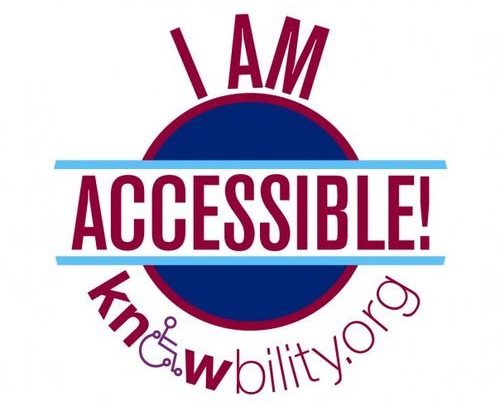
Being Part of the Solution with Technology and Knowbility
I first heard about the great work that Knowbility does through Dr. John Slatin, Sharron’s former co-author on a textbook on better cognitive design. John was the Director of the University of Texas Institute of Technology of Learning.
I am a PhD economist and was working for a think tank in DC on economy/ environment issues. In June 1997, I had a concussion/traumatic brain injury in a car accident. I sought medical care and as I tried to return to work, I wasn’t successful because I couldn’t read, the computer affected my sleep/wake issues, and I couldn’t manage my daily life. I was treated for headaches (but no cognitive therapy) and was told I had a limited window of recovery.
On the advice of a doctor, I turned off electronics and did my best to find my way to rehabilitation which was a slow process. Most of my doctors were telling me I would have limited time for my brain to get better.
Fast forward 3 1/2 years, I was able to get cognitive rehabilitation at St. David’s Rehabilitation Hospital after I moved back to Austin.
St. David’s Cognitive therapist, Liz Joiner, turned my life around and gave me the building blocks to manage my life. She got me back on the computer with compensatory strategies, and together we looked for a volunteer rehab job in technology, and for someone who could help me find solutions to the sleep/wake issues that I had after the concussion.
That’s where John Slatin came in.
John provided tech and design solutions such a:
-moving me to an LED screen from my CRT screen,
-trying to see if a screen designed to be accessible for people with low-vision would help me (I ran screaming from it!),
-trying to see if learning Jaws (technology designed to help people who are visually impaired) would help me, and
-getting me interested in helping finding a way to solve the cognitive frontier so that people like me could use the computer more readily and more easily.
John soon launched my public speaking career by giving me a spot to teach about cognitive disabilities in his class on Accessibility and the Internet. When we moved back to the Washington DC area, he flew me back to teach to his class for several years.
After we returned to Austin from DC in 2011, I reached out to Sharron Rush and told her the progress I had made in my recovery. By that time, I was the first non-military, non-pro-athlete person with a concussion to speak on the Congressional Briefing Panel for Brain Injury Awareness day and had spoken internationally about recovery from concussion. While I had had a lot of functional recovery (I could be a mom and I could drive), I still had issues with how the computer screen affected my sleep/wake cycle and knew it was a barrier to my increased productivity at home and on the small consulting jobs I was now able to do.
I started looking for ways to volunteer for Knowbility given that my husband and I were the parents of a toddler. I still had some fatigue and cognitive impairments which made my day challenging and I wanted to keep a positive attitude amidst the frustration. I wanted technology to empower me rather than set me back, so it was a tough balance. Sharron encouraged me to enter the OpenAir competition.
At that time, my husband had created a website for me, www.aplasticbrain.com. Each week, I tried to write about my recovery to give hope and inspiration to those who were trying to recover from a concussion. I wanted to make my website accessible for people who had eye-brain processing issues after concussion, and for other people with brain injury. Most websites were inaccessible to me, including those imparting information about concussion, because they were too busy, formatted poorly, and I would get lost trying to navigate them.
I entered my website into OpenAIR in 2013 and worked with an amazing development team. Joseph O’Connor was assigned as mentor and he was interested in cognitive disabilities. Joseph and the design team who I worked with ( a team from Cognizant in India) would translate my ideas overnight since they worked while I slept.
I am so proud to tell others about the hard work we did to create a site that is easy to navigate, simple, and has a color scheme that is soothing. Several years later, I’m still learning how to write more accessible paragraphs and post pictures and describe them for someone who isn’t sighted. But that’s one of the wonderful things about volunteering with Knowbility: I have learned so much in regards to how others with (and without) diagnosed disabilities experience the world.
Last season I volunteered to share lessons learned at OpenAir and to mentor another non-profit team. I always attend the kick-off ceremony and the finale when I can, because it’s so exciting to watch how each year the contest grows, becomes more international and inspires designers and non-profits alike. Last year, the increased enthusiasm among participants at the kick-off was palpable.
Each year, I speak about my cognitive impairments and technology at John Slatin/AccessU. It’s an opportunity to give back. Since I don’t look like I have cognitive impairments, it’s been a blessing to learn increased awareness about myself and learn increased strategies to empower me further. This year I want to teach about cognitive reserve and brain processing, so I’m already looking ahead to work with Knowbility on that for May 2017.
It feels good to be part of an organization that has solutions. We now know that 90 % of people who don’t get better from concussion have neuro-optometric/vestibular issues like mine. Solving the issues of cognitive design for people with concussion is paramount to helping them return to health and back to work.
Thanks to Knowbility, I’ve been part of the solution through modeling and teaching about what’s worked for me. I can spread the word and I am able to help others get the help they need.
My thanks to Marine Menier and Jessica Looney for editing this blog post!
Read More - Being Part of the Solution with Technology and Knowbility
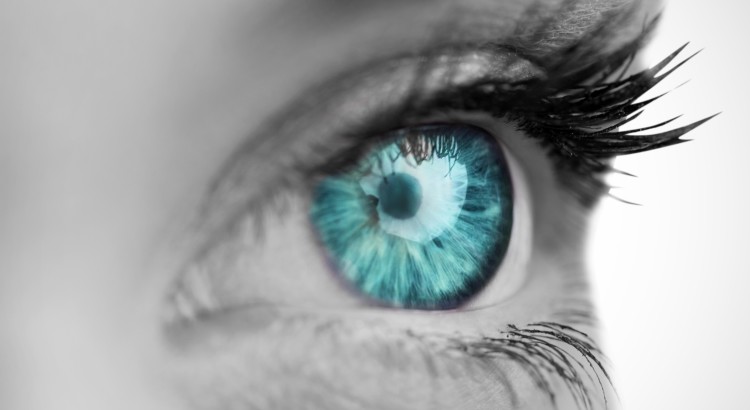
State-of-the-Art Neuro-Optometric Rehabilitation (Part 1)
I attended about 6 hours of an introductory “clinical skills” course on the vision system and mild traumatic brain injury/concussion issues at the Neuro-Optometric Rehabilitation Association (NORA) Conference here in Austin this weekend.
The extremely knowledgeable teachers presented skills for rehabilitation specialists who are already trained in their discipline as physical therapists, occupational therapists and optometrists. The course was higher-level, multidisciplinary skills for a smooth partnership between optometry, occupational therapy and physical therapy in the hospital setting or in the doctor’s office to improve patients recovery after mild traumatic brain injury and concussion.
More on the course itself and what I learned after I tell you why I wanted to attend.
Increased Motivation for My Rehabilitation after Attending the Conference
After going to the course, Wow! I am even more motivated about this therapy than I was before the conference.
I have already experienced the importance of neuro-optometry in my own long- term successes from neuro-optometric treatment.
And I have been even more motivated around my home exercises after hearing about the successes of a patient named Dr Clarke Elliott on the Diane Rehm Show this summer. Its almost hard to imagine how much that show inspired me.
However, listening to Dr Elliot model his recovery and listening to the expert doctors who refer patients to vision therapy, Drs Greg O’Shanick (Emeritus Medical Director at the Brain Injury Association of America and Director of a Concussion Clinic in Virginia) and Dr Korine Hudson (Sports Medicine at Georgetown University) was very powerful for me.
I want recovery like Dr Elliott has achieved! And, after learning more about his recovery, I know I am on the right path. I am on the right bath because of the work I have already done with neuro-optometric therapy and cognitive therapy. I know intuitively that I just need to do more of what I am doing already with professionals and at home, and I will get there.
As a patient, its one thing for my Doctor to tell me that I can get “full” recovery and its another (even better!) to watch a patient model his or her path and where its led for him/her.
When someone else recovering from brain injury models that they can climb to the next level, it gives me one more piece of confidence that I can too.
You might ask why a patient of neuro-optometry like me wanted to attend a skills conference for professionals?
One of the reasons why (and there are many) are that I know the patient side of neuro-optometry/vision therapy and I wanted to know more about the view from the practitioner side. I know how much its helped me.
Neuro-optometry or vision therapy has been extremely important in my recovery.
Neuro-optometry has played a critical role in my recovery from mild Traumatic Brain Injury/concussion.
And I know neuro-optometry is often overlooked or unidentified even for people with concussion who have persistent symptoms.
In fact, my course teachers said that at their hospital almost 90% percent of their brain injury patients are now concussion patients.
In their hospital, cf those people with concussion who have persistent symptoms, about 80% have neuro-optometric visual issues.
Here’s my engagement with neuro-optometry over the length of my recovery:
- I first learned about vision therapy when my top-notch neurologist told me that he couldn’t help me with some of the issues I began to identify after my own mild traumatic brain injury around remembering about what I read. My neurologist was helping me with understanding that anxiety and depression are part of the territory with an injured brain like mine and he was treating me for headaches. I was surprised to find out from him that addressing reading skills was not in his purview. I admit I didn’t know much about what doctors who practiced neurology did. I just knew he was a specialist and that I thought he could help me with all things that had to do with my brain so that I could return to work and to my life.
- I used my network in Washington DC to find a top-notch optometrist and found an excellent one, Dr Francke OD. Dr Francke gave a monthly talk about neuro-optometry which I attended despite the fog I was in from my injury. While I can say, I was in a fog, I intuitively understood that Dr Franke had a skill set that could help me.
- Dr Francke said he could help me. This was music to my ears. He talked about efficiency and brain processing. He said that my brain was less efficient after my injury and that I was using a lot of my energy trying to get my brain signals to connect again. When Dr Francke pointed it out, I realized I was much more fatigued from doing basic everyday skills than I had been before my injury. And that I needed more sleep after the accident and was often exhausted after what used to be simple tasks, even though I was getting more sleep. Because of my economics background, I understood what a lack of efficiency would mean for my body.
- Compared to the uncertainty that my primary care doctor and my neurologist about treatment and the two year deadline in recovery that they were telling me about my brain’s ability to heal, I was thrilled to hear from Dr Francke’s positive encouragement that my brain could relearn and rewire and that working with my vision was a direct way to rewire the brain. I was excited to learn his tools to get better. I was willing to work hard to achieve recovery in the long term. I understood that tradeoff because of my professional training as a PhD Economist.
- Dr Francke delivered. I did not get to any other appropriate treatment for concussion for years other than vision therapy, so I know that the vision therapy helped me make substantial gains. It also gave me hope. There were tangible things I could do to help myself get gave me tangible things to get better. It gave me a language to think about my brain getting better. And although my brain was exhausted after only a few minutes of eye exercise, Dr Franke worked side by side with me to help me learn to limit my activities so that I would learn how not to over-exhaust myself given my injured brain. Since I was not getting this kind of help from outpatient rehabilitation because my doctors had not prescribed it for me yet, it was crucial that I started learning these skills to help myself, so that things did not get worse for me after my concussion (unintentionally) and that things were beginning to get better!
- Working with Dr Francke, I got functional recovery. I can watch movies again. I have an increased sense of space around me. I have increased awareness about when my cognitive skills work and when I need to rest. I have increased awareness about where I am in space. I can remember what I read now. I have more energy. I understand more about my limitations and how to manage my life so that my life is more meaningful. In fact, Dr Francke taught me so much about my brain and how to manage my new brain and help retrain it, that I cannot even begin to summarize what I learned as I write this blog!
- Later in my recovery, I worked with an Occupational Therapist at Inova Mt Vernon Hospital on the Virginia outskirts of Washington DC, at that time the best rehabilitation hospital in Northern Virginia. Because I was doing so well after years of vision therapy and eventually cognitive rehabilitation with a speech therapist at St Davids Hospital here in Austin, after we moved back to Washington DC area. This time, my top-notch neurologist recommended me to a neuropsychologist who recommended me to a Physical Medicine and Rehabilitation doctor (called PM & R) at Inova Mt Vernon. She understood neuroplasticity and she knew that I could continue to get more recovery with the right help. The Occupational Therapist moved me forward using equipment such as a Dynovision board which athletes use to increase automaticity and accuracy in sports like baseball.
- Roughly three years ago, after over a decade of living with my symptoms from my TBI and slow and steady recovery, I have the visual and cognitive skills that allow me to drive independently again. I am driving and I have my own car. (I wrote about this in an early blog post!)
- And I am currently working with a physical therapist at St Davids Hospital on Neuro-optometry a recent neck injury and another concussion this year shortly after I gave my speech “Welcome to Your New Brain: Lessons from Concussion” at SXSW Interactive Festival.
- I have made big strides with the work I have done with the Physical Therapist at St Davids both in terms of my ability to organize information as well as read and organize space better and increased “automaticity”. More on this later and more on the cardio work we are going.
I have much more to say about the hope and success from neuro-optometric rehabilitation and my excitement after going to the Conference this weekend. I have more data to report from the teachers of the Conference!
I have so much to say that it was incredibly difficult for me with my current cognitive skills to write this blog as they are clearly changing for the better.
And I am able to finally write it today! Yahoo! I will write more next week.
With the New Year, I hope to write blogs two times a month. I also know that with my current cognitive skills I have doctor’s orders not to impose deadlines on myself. So I will figure out by doing, whether I am able to implement that goal and figure out how to scale back that goal so that its doable for now.
And, I will write a “Plan for Success” around those seemingly opposite constraints as I successfully did in 2014. More on where I learned about Plan for Success as well as on my engagement with Neuro-Optometry.
Read More - State-of-the-Art Neuro-Optometric Rehabilitation (Part 1)
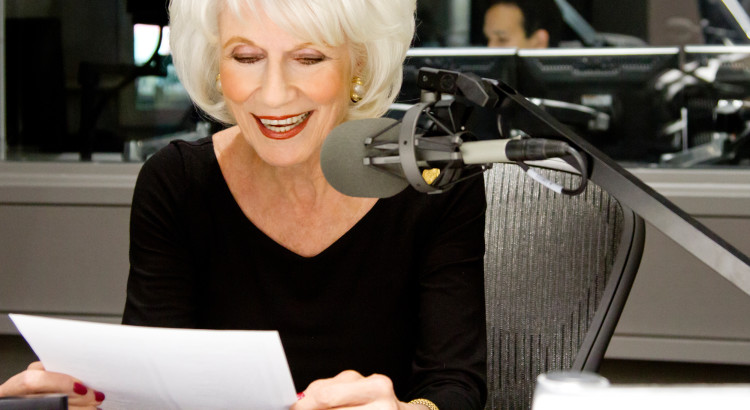
Validation, Recovery, and the Diane Rehm Show
I listened to the Diane Rehm Show on “New Treatments for Concussion” last month. It inspired me and validated me and I cannot say enough good things about it.
Diane Rehm is a nationally syndicated talk show from WAMU in Washington DC. Here’s the link to the show.
http://thedianerehmshow.org/shows/2015-06-04/new-treatments-for-concussions
I want to tell you why I thought the show was really helpful to me and other people with persistent symptoms following concussion that I have communicated with during my speaking engagements or whom I have met during my advocacy work or online.
I have so many good things to say about what I heard on the Diane Rehm Show. I want to focus on several aspects of the validation and hence recovery that I received from listening to the show.
First though, I want to step back and talk about my perspective before I listened to the Show, in order to then tell you what the show meant to me.
The need for validation after brain injury
Dr Cheryle Sullivan, MD, a colleague and a friend who lives with persistent symptoms following concussion and who writes and speaks about managing them, said something to me earlier this year that has stuck with me.
She said “we (people with brain injury) need validation”.
I found her acknowledgement of this issue profound because of who she is. As an MD and as someone with persistent sypmtoms, she recognizes that the lack of validation that many people with persistent symptoms after brain injury (both concussion and those who have had comas) has an impact on people with this injury and the impact is not a positive one.
From my perspective as a PhD and as an advocate for people with brain injury, I see that link and I think it has a negative effect on recovery.
Why do people with persistent symptoms following brain injury need validation?
Here are the first five reasons off the top of my head why the need for validation:
(There are so many reasons, I am sure there are more!)
1) It is difficult to get support for recovery from friends, family, employers, co-workers, neighbors and others, when people who are in the position to support us with persistent symptoms do not understand how the injury can affect us and do not know what to look for or how to evaluate what they see. I know after my accident, many expected to “see” my injury and many thought they knew what they should be looking for but did not. Recently, Amy Zellmer has written about this eloquently in the Huffington Post. Here’s the link:
2) It is often difficult to get appropriate medical care when we aren’t able to articulate what is wrong, and don’t have the support.
Right now, there is no biomarker for concussion. A doctor must diagnose it. Usually a neurologist or sports medicine doctor or physical Medecine and Rehabiliation doctor makes the call.
I have known many people who thought they were cleared and either didn’t have a concussion or who were “well’ following concussion. I know many people cannot get a referral from their primary doctor to get to the medical professional who can make this call.
And I have known many people who were misdiagnosed as having a mental disorder (anxiety or depression).
I was an expert consensus panel member for work by the Ontario Neurotrauma Foundation (Canada) to develop guidelines to teach primary doctors how to recognize concussions and refer appropriately because doctors there recognized that Primary Care Doctors needed better information.
http://onf.org/documents/guidelines-for-concussion-mtbi-persistent-symptoms-second-edition
I am fortunate that my neurologist in DC recognized that I had a mTBI, within a month after my car accident and that the primary care doctor I saw did keep me under observation and referred me to a top neurologist in DC where I lived at the time. I thought the fireworks I went to watch on 4th of July were going to fall out of the sky and on to my head, and I couldn’t recognize a co-worker I worked closely with at that event. We had gone to watch fireworks on a hill, overlooking DC, in a more quiet environment, and had run into my co-worker and his family there.
I am also fortunate that my neurologist taught me that “anxiety and depression” go with an injured brain. They are secondary effects for many. The injured brain “knows” that it is injured and responds to keep us safe as best it can. Of course its anxious as it cannot protect itself as it could before. Of course its depressed because life is harder and it cannot do what it used to do. And I would add that it was depressing hearing what I heard at the time of my injury which was no treatment, and there is a limited period of time for recovery (I was told 2 years).
Dr Sandra Chapman, a neuroscientist, recently wrote about the issue of how long one can recover after brain injury.
Dr Chapman’s work shows that one can can recover with appropriate rehabilitation years later.
http://www.huffingtonpost.com/sandra-bond-chapman/changing-a-common-belief-_b_7588400.html
We need more studies tracking recovery for longer periods of time to know more. But I am pleased to see this work trying to change a common belief that often limit’s people’s ability to recovery.
If you don’t think you will get better, or if your doctor tells you that you cannot, you are likely not to try. It can be a self-fulfilling prophecy.
Dr Allen Brown, at Mayo Clinic told me that one factor that limits recovery that is true for many injuries (not just brain injuries) is information from a doctor telling a patient that its not possible to recover or that there are specific time limits.
3) I had undiagnosed aphasia (difficulty with speech–word-finding and concept finding and I couldn’t figure out what was the topic sentence anymore in a paragraph). So I needed to advocate for myself to get treatment beyond just the diagnosis but the very injury itself stands in the way.
Dr Elliott spoke briefly about the difficulty of having to find treatment for concussion oneself (while injured) on the Diane Rehm Show program. He says (and I am paraphrasing) just trying to live, raise his kids, keep money coming in the door and develop strategies for continuing his work as a professor, meant that he had limited time to find his rehabilitation and he didn’t know where to turn when his doctors told him he couldn’t get better. Like me, he is a PhD. I remember thinking 6 months in to my injury, if this is how hard it is for someone like me, who started with many advantages in life, to get the help I need to get better and to be able to return to work, what’s it like for someone who didn’t have these advantages?
4) After I wasn’t “well” after not getting treatment for my concussion, I began to hear “suspicion” from some medical professionals that I that I sought out to help me.
Fortunately, I had gone to see Dr Thomas Kaye at Rusk Institute in New York, about help with my recovery. He was recommended by Dr Morton Percoff my friend’s Dad who knew brain injury after his son’s tragic TBI. In talking with Dr Kaye, it was clear that he could see that I needed more help. Working with him, it was clear to both of us that I needed to find the right doctors in DC because NYC was too busy, I had no money. I couldn’t imagine moving to NYC, even temporarily, no matter how desperately I needed care.
I didn’t realize how hard it would be to find people in DC to help me. Dr Kaye knew I needed help and he had contacts in DC. I was already getting better from my vision therapy, but I needed more. I needed more help from other professionals.
But finding the right people in DC was hard for me because the injury stood in my way and I did not know best strategies yet as to how to navigate.
When I met what I considered resistance to helping me with brain injury recovery, I wondered how did people expect me to get better without treatment? From inside my brain injury, I still had some logic going. If I am coming to you for treatment because I want to get better, why aren’t you sympathetic to that fact? Why aren’t you looking at my case and saying she needs more treatment to get better? And if you don’t believe me, why not consider that my doctors already thought I did which is why I was coming to you and that their opinions ought to count for something?
Despite setbacks with doctors and with my recovery, I was persistent and I got better. I know in retrospect that brain injury rehabilitation has worked! If I weren’t getting the right treatment, one would not expect it to work.
It’s hard to need treatment, seek it out, and then be told “maybe you don’t want to get better?’
This is what I heard from a doctor who was recommended to me.
I also heard “you can walk and talk, what more do you want?” an offhand comment from a medical professional.
I didn’t feel seen by medical professionals as to who I was when I heard these comments.
And seeing professionals who said things like this didn’t make me want to seek more medical care. I felt I had to really work hard to get my courage up to see a new medical professional during years 2 through 5 because I knew the appointment could go completely wrong. Later, I both had more skills to advocate for myself and I found more and more doctors who were sufficiently impressed by my recovery so far to know how hard I was working at it, or who understod brain injury recovery and the faults of our current medical system following concussion that they knew that I wasn’t getting better faster because I wasn’t getting treatment.
5) I heard from many people that concussion symptoms only lasted for 6 months at most. And therefore if I had symptoms longer than 6 months, I must not have a concussion. While I couldn’t access alot of my economics skills, I had enough logic and enough training to learn that sometimes the lack of research is misinterpreted as proof of something that cannot be proven until it is better researched. As I investigated it, I found that not many quality studies had been done following concussion as to how long symptoms lasted. Years later, after I got better, I heard Dr Barth from the University of Virginia at Charlottesville talk about the seminal work they had done in the early 1980s on people who had persistent symptoms after concussion in the UVA teaching hospital. He found that there were a group of people that did not get well (after hospitialization) and he began studying them. They had brain injuries. Later, he began studying athletes on this issue. Everyone knew that athletes wanted to get back in the game after injury. Its fascinating to me to know that they are finding that about the same percentage of athletes have persistent symptoms even after they have close supervision for recovery (i.e. support for recovery and medical attention to help recovery). Please see the citations to Dr Barth’s early work regarding my summary of his research (at bottom of page).
And I haven’t even mentioned that Dr Hudson and Dr O’Shanick spoke to the difficulty that people with persistent symptoms have getting help after concussion and the acknowledgement that many are mistakenly seen as malingers when they try to find the help they need in the medical system.
I have so much more to say about this show! Another blog.
Thank you so much to Dr Clark Elliott (Computer Science), Dr Korin Hudson (Sports Medecine, Georgetown) and Dr Greg O’Shanick (Emeritus Medical Director of the Brain Injury Association of America and Director of a Concussion Clinic in Virginia) and the Diane Rehm show.
http://thedianerehmshow.org/shows/2015-06-04/new-treatments-for-concussions
Citations from Dr Barth regarding his work:
Rimel, R.W., Giordani, B., Barth, J.T., Boll, T.J., and Jane, J.A., (1981). Disability caused by minor head injury. Neurosurgery, 9, 221-228.
Barth, J.T., Macciocchi, S.N., Giordani, B., Rimel, R., Jane, J.A., and Boll, T.J. (1983). Neuropsychological sequelae of minor head injury. Neurosurgery, 13, (5), 529-533.
Barth, J.T., Alves, W., Ryan, T.V., Macciocchi, S.N., Rimel, R., Jane, J.A. and Nelson (1989). Mild head trauma in sports: Neuropsychological sequelae and recovery of function. In H.S. Levin, H.M. Eisenberg and A.L. Benton Mild Head Injury, New York: Oxford Press, 257-275.
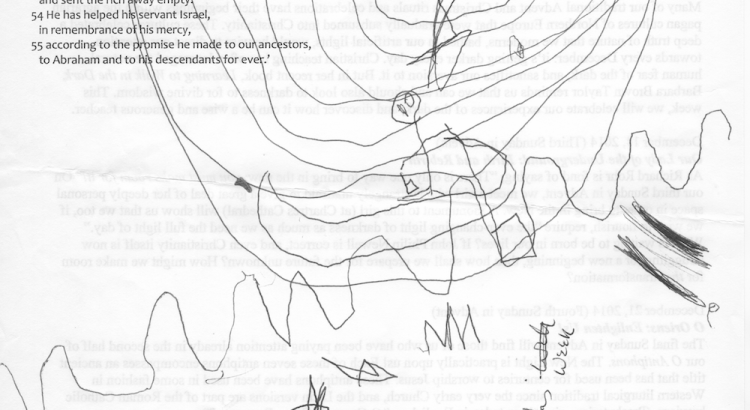
Practicing Medical Resiliency
Oh my gosh!
Its been a while since I have posted.
I have been practicing my medical resiliency skills after my talk at SXSW.
Let me start by explaining what resiliency skills are and why I needed them after my brain injury.
Medical resiliency skills
The picture for this post is one that my son drew while we were listening to a talk about dealing with life’s ups and downs.
If you look at the picture for the post, you will see that my son’s drawing has a stick figure moving up the ups and downs (in the middle of the picture).
I chose to use this picture for my SXSW talk and for this blog post because it looked remarkably similar to a picture my speech and language therapist, Liz Joiner, at St Davids Hospital here in Austin drew for me on a white board when I started rehabilitation with her.
At that time, she explained that life has its ups and downs.
She told me she would teach me strategies to help me:
1) manage life’s ups and downs better with my brain injury
2) manage them in such a way that my life got better (which is upward in the picture).
From my perspective, my son’s picture represents the path that every person hopes so that the stick figure applies to everyone trying to manage their lives.
The picture Liz drew was one for me in particular.
The difference between me and every person is that learning and practicing these medical resiliency skills are critical to my life.
They may be optional for those who don’t have the medical and functional issues I have after my brain injury.
Before I got to inpatient rehab with Liz over 3 and 1/2 years after my injury, I couldn’t manage my life despite all my best efforts and hard work to do so..
What my life was like post-injury before I was taught medical resiliency skills:
Usually, I wouldn’t notice I was in one of life’s downs, until afterwards, because I lacked the ability to anticipate what would happen next.
Life is ups and downs.
However, once I hit one of life’s downs, it would often turn in to a downcycle where things kept getting worse.
And, that cycle would often lead to a tailspin downwards.
My life would begin circling downwards at a faster and faster rate. like a plane shot down and circling downwards before crashed to the ground.
As I say in my speeches, I was working really hard to manage my life to keep my life from going from bad to worse.
I was working much harder than I had ever had before in my life.
It took more energy to do basic things because my brain was damaged.
So I was often too tired to function.
And my cognition was impaired.
Although I did not understand it at the time, my fatigue made my cognition worse.
Being in a tailspin required added urgency to level out the plane (and my life) so that I could function.
I couldn’t manage the downs.
Once I started in to a tailspin, I would have difficulty sleeping (too tired to sleep!) and so my cognitive symptoms would get worse because I was not getting sleep.
I would often get depressed that I couldn’t manage my life (no surprise there, who wouldn’t!)
Eventually, my immune system would get depressed.
With a depressed immune system, I was more susceptible to colds or flu, especially in the winter in Washington DC.
Once I got better, I had less energy and enthusiasm for starting over and trying again to get my life going, knowing the tailspin I just had.
Now I can see that it’s harder to get out of a tailspin once it starts. It takes energy and brainpower and good doctors.
So, I am very grateful that I was able to get out of tailspins eventually with the help of my medical doctors and complimentary care doctors.
However, it was no life at all, living from one tailspin to another.
How would a tailspin get started?
Usually through unintentionally overdoing it.
I did not yet have awareness as to what was overdoing it, although I was learning some awareness through my vision therapy exercises and my work with Dr Franke, my vision therapy doctor who would review with me my activities at class.
Sometimes, events outside my control would through me into a tailspin.
For example, I had to get Independent Medical Exams with doctors assigned to me by insurance carriers during the first few years of my injury.
Often those exams were so taxing on me that I they would throw me into a tailspin. (More on that later!)
And often I found that they were simply a distraction to my recovery as well as time and energy away from my recovery rather than helpful to my recovery.
But that’s another blog post.
Back to medical resiliency skills.
Medical Resiliency Skills:
1) Be aware of life’s ups and downs and how they can worsen with injury or illness.
2) Learn to plan for life’s ups and downs.
3) Develop “go to” strategies to employ to prevent things from getting worse in a downturn.
(Some of these “go to” strategies are general, some may be unique to you)
4) Develop strategies to even out the ups and downs and to keep on going when times are bad.
5) Learn from the last downturn to develop awareness that may be needed to develop better strategies to minimize the next downturn.
6) Learn from the upturns that there will be a downturn, and that is okay.
7) Learn that healing is not linear. In other words, healing is not a straight shot upwards, its an up and down and the goal is for the ups and downs to go in an upward direction overall.
So that if you drew a straight line through the average mid point, you would find that it moves upwards (representing life is better or easier or more functional)
8) Learning to reflect back at the trend and recognizing how one’s life is getting better or easier or more functional.
9) Celebrating progress, if there is progress.
10) Getting help (either medical or help with lifestyle changes) if there’s not progress overall.
11) Learning that there may be big setbacks. Last summer was an example for me of a major medical setback.
Suffice it to say that after all the hard work I did leading up to the SXSW talk, I knew that I would be tired, that I would need to rest. And that I would need to relax and listen to my body.
I pushed hard to do the speech and I knew that “the piper would need to be paid”. In other words, that I could ask my brain to push a little harder than I normally do (but not too much), and I would need to compensate for that extra pushing in the short term by resting and relaxing until I replenished myself and my brain afterwards.
Let me explain that further.
Since I was preparing a new speech for a new audience (a smart and tech-savvy audience), I knew I needed lots of support and lots of help from my village as well as support with developing the speech.
I had great help from two writers in particular, Thatcher Freund and Katie Matlock (more on this later).
But because I was doing something new, I couldn’t anticipate ahead of time all issues that would arise in preparing a new speech (more on this later).
Looking backwards, I was not able to anticipate how much bandwidth (energy and brainpower) it would take for me to do my part in preparing the speech and giving it.
After the speech, I have needed to rest and practice my medical resiliency skills.
Do you know about medical resiliency skills?
Do you use some of these skills but do not call them resiliency skills?
Which ones do you use?
How did you learn these skills?
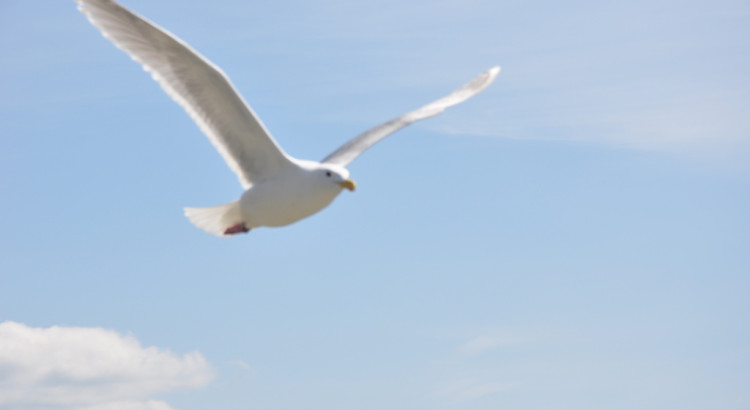
SXSW & Brain Injury Awareness Day Technology
I gave my speech at SXSW yesterday.
I am soaring.
People really liked it.
I am also exhausted.
Here’s the info about the speech, if you haven’t already seen it.
http://schedule.sxsw.com/2015/events/event_IAP41233
I will get the content of my speech on the my blog as soon as I give my brain appropriate rest!
Its Brain Injury Awareness Day on Capitol Hill.
POPVOX, a technology to communicate with your lawmakers in Washington, has created an issue spotlight for Brain Injury Awareness Day:
https://www.popvox.com/blog/brain-injury
You can use this technology to tell your story briefly to your Representatives and Senators!!!!
Please use it to communicate with them today or this month for Brain Injury Awareness Month!
Brain Injury Association of America Briefing Papers here:
https://www.popvox.com/stakeholders/biausa
Please tell your lawmakers why devoting resources to brain injury research and recovery is important to you.
And ask them to join the Congressional Brain Injury Task Force, if they are not on it already.
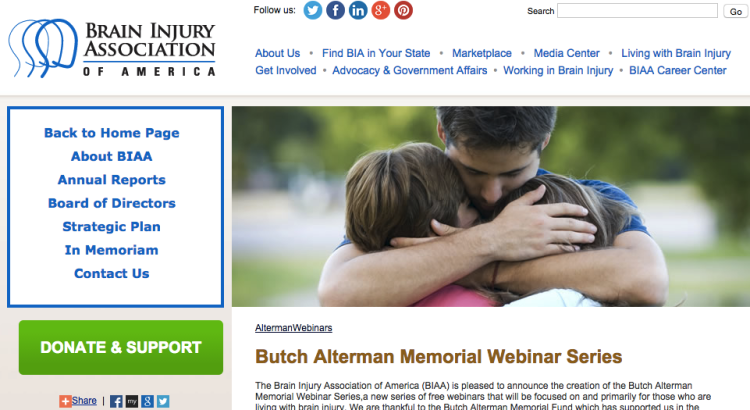
New Webinar series at BIAA by people with brain injury for their peers
One of the many highlights of this week, was getting to listen to Maria Romanas, MD PhD talk during a Butch Alterman Webinar through the Brain Injury Association of America (BIAA).
The webinars are FREE. You must register for them. You can download handouts even if you did not watch or register to watch.
I will provide the links at the end of this post so that you can learn about future webinars, and download handouts from past ones.
Before I write down what I learned from the webinar last week, I want to step back and explain about this new webinar Series through BIAA.
The Butch Alterman Webinar Series:
The Butch Alterman Webinar series is a relatively new series. It was started in 2014 and there have already been 4 webinars (including Maria Romanas’s)
It is a webinar series for people with brain injury by people who have gotten better after brain injury and who have been selected to share their understanding, strategies or knowledge from their journey and from their hard-fought experience and learning about what helped them.
The series was created by Mo Alterman, in memory of her husband, Butch who had had a brain injury. Butch Alterman was a teacher by profession.
After he died, the series was created by his wife to honor her husband’s belief in the importance of teaching.
I am fortunate that I got to meet Mo Alterman years ago. Mo was the President of the Board at BIAA in the early 2000’s. I started volunteering at BIAA in about 2003, after we returned to Washington DC. At the time, I could not get help matching the skills I had post-injury with a job opportunity. After I met Robert Demichalis, a volunteer at BIAA, he invited me to share his office and use a second desk in his office. I thought it would be a great opportunity to learn what job skills I actually had and learn about the Brain Injury Association of America.
Back to Mo. I was impressed by her because she was tough and outspoken and a tireless advocate for people with brain injury. She believed in the importance of improving the lives of people with brain injury. Of course, she was not alone in that belief at BIAA, it was just that she was passionate and I “got her” immediately. My experience working with the staff and people who volunteer their time and energy to BIAA is that they all want to improve the lives of people with brain injury. I have over 10 years of experience volunteering at BIAA and I have both received tremendous support in my journey to recovery and I have learned an incredible amount of helpful information from them. I have also contributed from my perspective as a person with brain injury in many ways. (My volunteer work is another blog post which still needs to be written!)
One last thing about Mo. I felt very drawn to Mo as a leader, just like many others did. Her dedication and passion were inspiring. And her knowledge about brain injury and her own personal journey to help her husband get the resources he needed were obvious in her command of the issues.
Here are the links to get information and register for the Butch Alterman Webinars:
Some tips about the links and technology:
With my cognitive and visual issues from my brain injury, I often have a difficult time finding information on many websites. To summarize, I often cannot even find where on the website the information I need lives, trying to find it may increase my frustration to intolerable levels, and I leave the website empty handed, frustrated, and angry. Worse, being on a really busy website may set off headaches or other symptoms and depending on the stage of recovery I am in, and thus I may have to get emergency cognitive rest, or change my day in order to get over the damage that the busy website has done to my wellness.
On any given day, I can have problems with the Brain Injury Association of America’s website because it is very busy.
So I want to help others who may have some of the same issues with finding and using what they need on websites the information that may help them.
Having been empowered by my accessible technology team at Cognizant and my advisor, Joseph Karr O’Connor, I want to pass on what I have learned so that you may be able to take advantage of this excellent Webinar series at BIAA and the resources that it makes available to you.
Before you click on any of the links below, please read through to the bottom so you will know what to expect.
Writing down the steps before you press a link may be helpful.
Writing things the steps for yourself on a blank piece of paper will help imprint the steps in your brain.
You may want to rearrange the steps once you have written them down, depending on what makes sense for your deficits and the way your brain works.
And remember, in trying to sign up for a webinar, you are both doing something new and trying to follow many steps.
Give yourself plenty of time and space to do this, and recognize that you may not get it right the first time, and that is okay.
As Dr Maria Romanas will tell you in her talk, doing anything that is new, is harder.
As Dr Maria Romanas recommends for starting any new task, take two deep breaths before you try to execute these steps.
And remember, that people with out brain injuries, may have a difficult time following these steps as they may not have been optimized as well as possible for someone learning for the first time and finding the right buttons. I know that my husband, someone who works in on-line technology has told me that often websites will say press here, and they have not put a button on that page to press. Frustrating for anyone even if your brain works fine.
Below is the link that tells you about the Webinars series:
Click on it.
http://www.biausa.org/education/altermanwebinars
If you want to register for the Webinar:
Click the link below.
http://www.biausa.org/biaa-events.htm
Once you have clicked on it, scroll down to the midway down the page until you find the upcoming Alterman Webinair.
If you want to download handouts for the a Webinar, or a past one:
Click on the link below;
http://www.biausa.org/education/altermanwebinars
Scroll down to the heading that says Recording and Handouts of Previous Alterman Webinars.
Click on first link after the webinar handouts that you want.
Lastly, I have learned the trick of using Google to search the BIAA website. I put “Butch Alterman Webinars at Brain injury Association of America” in the search bar and that worked.
I need your feedback!
Do you have problems with searching and finding information on websites? Please leave me a comment and describe tips that help you.
Also, I will have to think about what the best way to give these links and improve them. Please give me feedback if you were able to use them or better ways to write them so that they are easy to go to.
Having tried to make my website more accessible, I know that sometimes finding what works best is trial and error and I would like to learn more about what works best.
Read More - New Webinar series at BIAA by people with brain injury for their peers
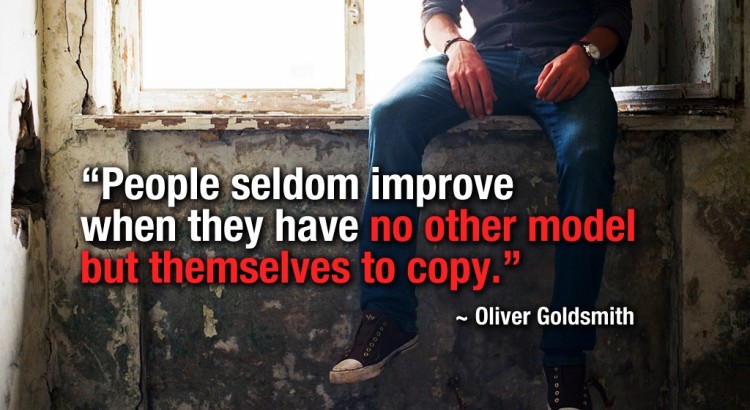
Empowerment from Role Models
One of the many things that I found empowering working with my Team AxIS and my advisor, Joseph O’Connor was that they used the computer so, well, easily.
I realize the descriptor easily may sound like a funny use of terms. Of course designers, developers and usability experts would use the computer easily!
And, especially when compared to my computer use.
Because my team knew how to use the computer to create the website that we talked about, I could watch them do things in a short period of time. What they were able to do was so far beyond my abilities. I could literally see things that we talked about taking shape before my eyes. Sometimes it wasn’t quite that fast.
However, my team was in India, and their day was my night.
So sometimes they would work on the site while I was sleeping.
And so I would wake up and start my day and when I looked at the computer, there would be an email to open.
And the email would show me suggestions that my team had for how to make the ideas we talked about the night before take shape.
Some days it seemed instantaneously.
Some days it might take longer. Often I was just getting used to an idea when it was already mocked up.
Just to say something I have learned about myself and my decisions is that I definitely have delayed processing post-injury and so it often takes me awhile to get used to an idea. I may have had slower decision-making prior to my injury, its hard to know. What I do know is that my decision-making is slower post-injury and so getting used to that and working around that is part of my “new normal”.
Back to my website and my team. From my point of view, my new website began to take shape very quickly.
To me part of the empowerment that I felt from participating in the Knowbility Open Air Contest, was that watching my team gave me hope that one day I will use the computer much more easily and much faster like I could see that they do!
I was an early adopter of computer technology before my injury and I know the benefits that the appropriate use of technology could give me to enhancing my productivity and quality of life.
However, with my slowed learning following my injury and the difficulties I have had with the distractions of the computer as well as the trade-off I face in terms of energy loss from concentrating in front of a screen, and countless other issues that I don’t have a grasp on yet, I have had a difficult time with experiencing gains from the computer.
Watching what my team could do not only motivated me and gave me hope just by seeing what they could do.
They also broke down for me new learning. I would get an email saying these are the steps you need to talk to do this. In others words, they gave me procedural information that I could follow.
First you do this, then you do that.
And I can follow simple instructions that tell me what to do and when.
Often I cannot break things down for myself.
But if the instructions are good and precise (and do not skip any steps), then I can follow them.
And if I cannot follow them the first time, I can try again and again until I learn them.
And I feel so empowered when I am successful at doing step one and then step two and then step three.
When I have hope because I can see where others are able to do and when I have a complete step by step approach, I can use the computer (or mobile phone or ipad). And I can experience benefits of technology. And I feel empowered.
When technology disempowers me, it disempowers me much more than it disempowers someone without my cognitive issues.
When I cannot learn how to do something new on the computer, either because their are implied steps or there is an assumption of knowledge that I do not have, or because I am unable to break down the steps myself, I experience frustration, just like others.
What may not be like others however is that I am conscious that I am dealing with a lot of increased frustration in just going about the simple tasks of my day. And in order to get through the day, I am already pursuing strategies to keep my daily frustrations from getting me down or getting me depressed.
So going on the computer to help me, and ending up with increased frustration, is often a risk that I cannot afford to take in my day, if I am already having a tougher time in my day than I am used to.
Or if my brain is not having a good day. In other words, if my brain is having a harder time performing simple tasks that I normally can do.
What my team did for me was by help me by pass much of the increased frustration that working on the computer can do for me.
They were motivated to help me, and they wanted me to succeed.
They broke it down for me.
Step one is this.
Step two is that.
And they modeled for me where I want to be one day.
And when I couldn’t do a task they suggested, they broke it down differently for me.
Together we found a way for me to increase my appropriate usage of the computer.
Everyone needs models outside of themselves to inspire them and help them with the steps they need to go where they would like to go.
I needed them before my injury!
After my injury, I need them more.
Thank you Team Axis and Joseph O’Connor and to all those at Knowbility.
Thank you, thank you!
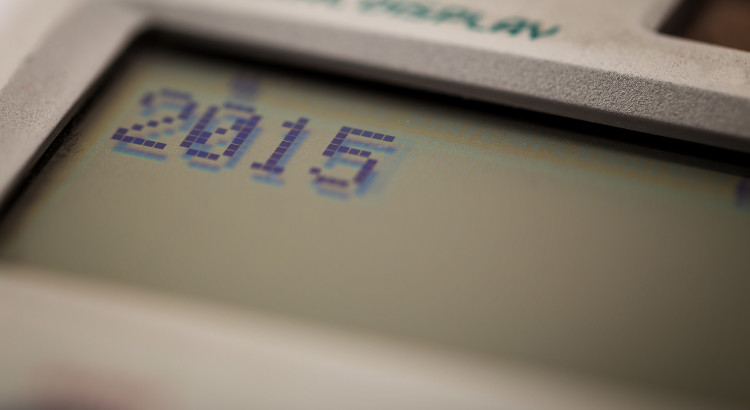
2015
Happy New Year!
I am learning how to use my new, more accessible, website.
I asked my husband to teach me how to post pictures. I needed reminding about where to find pictures, and he looked and found 3 pictures about the new year.
Eventually, I choose this picture.
I liked the the technological aspect of the New Year. Based on the end of last year, I think I will be learning about how to increase my use of technology this year. Working with my very knowledgeable team during the Knowbility Open Air Contest taught me many new things about accessibility and about my website. It will take me practice to learn some of the new skills such as writing more accessible posts, even now that I have more of an idea of the resources that can help me with that.
The other reason I choose it was that the New Year has started in a rather blurry fashion for me, once I thought about it. I liked that the 2015 in this picture is not sharp and distinct but blurry and less distinct.
You see, I ended 2014 feeling very empowered by the work on my website that my team and adviser and my husband and I did. My entire team moved my website forward and helped me in ways that I did not even imagine they could, prior to the contest.
Perhaps anyone working on a website would benefit from others teaching them better ways to express themselves on their website and reflecting back to them suggestions for improvement.
For me with a brain injury, learning to pay attention to others feedback and incorporate it into my world view has been an essential part of the skills I have learned in rehabilitation and outside rehabilitation that have helped me recover as far as I have.
So having my entire team reflect back how they saw my mission and my logo and my site was very powerful for me. The most meaningful thing that I can say is that I started the contest with a logo of a brain with a band aid on it and ended the contest with a logo of a healthy, growing brain. I felt empowered in many ways, but most importantly I no longer identified with a brain with a band aid on it and instead I realized that I felt a sense of integration and wholeness, such that I could identify with a healthy brain. That is what my journey has been. And once a integrated and whole brain was reflected back to me, it was obvious to me that that was the way I felt about my journey and my brain, now.
Wow!
I felt incredibly empowered!
And then, the blurry part of 2015 that is in the picture came next.
Right at the end of December, my husband got the flu. We had a nice New Years Day with friends and family, and then sickness and flu tore through our family–low energy, congestion, fevers, and a lot of work compensating and getting each other well.
The lightest way I can it is that we have been practicing another set of skills this New Year. We have been practicing resilience skills.
Some of my medical resilience skills are:
–focusing on trying to get well as quickly as possible,
–focusing on keeping things from getting worse once you are sick,
–recognizing that “this to shall pass” and getting as much rest as one needs,
–being easy on oneself while one is sick;
–in other words, not try to push oneself;
–re-arranging any activities and plans that are not critical (bill-paying is critical);
–my cognition was much lower with my congestion so re-arranging activities was critical for me.
I wrote a draft blog the second week of January, and realized I should postpone working on my blog until I had more cognition and more perspective.
So I am inching my way into starting 2015.
But my sense of empowerment from participating in the Knowbility contest has kept my mood high despite not feeling well and the many tasks helping my family while they weren’t feeling well. And helped me cope with the many rainy and cold days that Winter has brought (unusually many for Central Texas).
And when my son came down with strep throat on Friday, I realized that January may be a much tougher month than I thought.
But I still think 2015 will be a good year! And a year of increased new learning of technology.
And now I will go learn more about how to write text that is more accessible with subheads and how to edit the alt text for the picture now that I have written my blog. One step at a time.
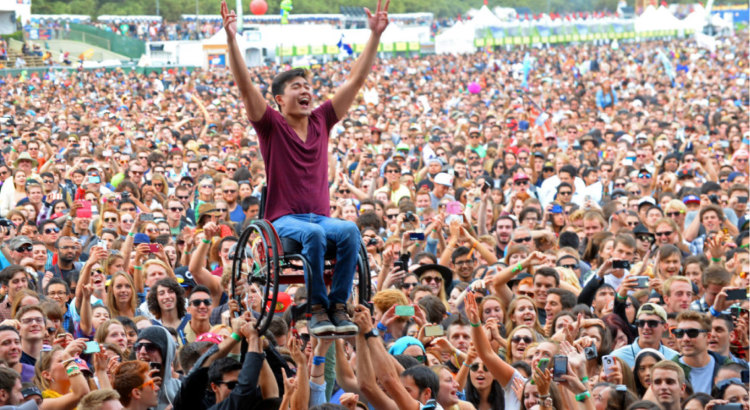
Accessibility is So Empowering
Last week, I attended a Skype meeting of my team for the Knowbility competition. I spoke with members of my team (team Axis) and my adviser Joseph O’Connor about where we were in terms of development of my website, what had been done recently and did it work for me, and questions that I needed to bring up with the judges at the Pit Rally at Knowbility the next evening.
I found the meeting very empowering and supportive. I learned from all of the members of my team about the kinds of things they were thinking as they were developing the website. I learned about how a screen reader (accessibility tool for a person who is blind or cannot read the screen without assistance from a machine) would read the site and what coding needed to happen for a screen reader to read my request for left sided navigation. I learned about font size and color contrast and the concerns that needed to be addressed there. And I learned about how they saw my site which helped me understand more about my own thinking about my site and what’s not articulated in the text or architecture. And I learned that I needed to know a lot more about what scientists knew about neuroplasticity before I could articulate it, and that even though I know what it is through my experience of it in my getting better since my injury that I don’t yet know how to talk about it very well, even though the increases in my neural pathways must underlie the increased functioning that allows me to be talking through skype with my team and addressing my teams questions and following my team and adviser to the extent that I am following them. (And following them as much as I did made me appreciate how much I wasn’t understanding what they were talking about nearly as well in the last two calls!)
All kinds of information came together for me and I understood so much more about the concerns that they were already addressing to make my website more accessible. I also had new learning about the state of the research (or lack of research) on design elements to address cognitive accessibility issues on websites. And I began to understand just how much thought and effort my team and adviser had been doing already and were continuing to do to make my website as accessible as possible to people with cognitive disabilities. I felt so supported and I felt so blown away by the work that had been done and I learned from everyone. I felt like my head was about to explode (in a good way) with new ideas and connections. I literally felt that I could feel my neural pathways strengthening and branching out and connecting and growing. I do not know how correlated my experience of what my head felt like with what was actually happening to my neural pathways. Hopefully someone more knowledgeable than I can tell me about that correlation that happens between brain change and learning and whether some aware people can indeed feel it or not.
Maybe I am just willing my brain to grow and the visualization that I am doing by willing and imagining it, promotes the growth.
Or perhaps since I know that my neural pathways have grown and developed in the past, I know to believe in brain growth. Perhaps it will happen because it has happened before. Perhaps, there is not a correlation to what I am feeling in my brain and my pathways growing. This would be an interesting question to know the answer to!
I would like to say more about all the concrete reasons that I felt empowered, during that call.
But that will have to wait today because I need to limit my time on the computer and I have other things that have to get done today.
I do remember having an experience before my brain injury where I thought I could literally feel the pathways of my brain growing after new learning, when they finally started to develop (which seemed to take longer than I expected they should take).
So I will share my memory of that experience with you to see if you can recall a similar time when you knew you were learning something new in a way you hadn’t know it before.
I took calculus (or was it linear algebra?) in the summer time at the University of Texas to prepare for graduate school in economics.
Since it was summertime, the course moved quickly and we had three tests in a short period of time, maybe six weeks, maybe eight.
I found nothing intuitive about the math I was trying to learn. In addition, the graduate student leading my section was very bright but his explanations of the work were not helpful to my own learning. So I had to study really long hours and really intensively.
I remember feeling after the taking the second exam, that I finally was understanding the concepts that I had been tested on in the first exam.
And I felt that I could feel the pathways grow from the new learning (although I would have said it was just my brain growing at that time). I could look back at the first test and understand all these problems that I had answered more by rote than anything else. And now I could connect them and understand them! Suddenly, I knew the material and could begin to apply it!
That is a description of what the experience felt like before my brain injury, and its how I felt after my meeting last week with my team and adviser. Except last week the experience was even bigger. During our call, I began to understand what my team was thinking about it a much more expanded way and how supportive it was of my own mission with my website.
How did I feel after our team meeting?
Here’s the visual that I want to leave you with.
When I watched the live streaming of the annual Accessibility, this Fall, I was impressed by a picture that one of the presenters showed about what accessibility is.
It was a picture of a woman in a chair (wheelchair) being held up off high off the ground and supported by a group of people (who did not need to use a chair to help them stand). It was a very empowering photo of possibility when everyone works together to support someone who is differently abled. (Please see bottom note now that picture has been added to this post.)
I looked at that picture and thought, I want to feel that kind of support around the computer and my cognitive deficits that limit my abilities.
After working with my team last Wednesday, I felt (and feel) what I imagine the woman in the chair felt.
During our team call, I felt lifted up.
During our team call, I felt supported (even more than I had already felt).
And honestly, I felt that together, the sky is the limit!
Accessibility is so, so, empowering.
—–
Bottom Note:
I came across my notes from the Accessibility Conference and found that Elle Waters had shown this picture and that it came from the Huffington Post originally. Elle Waters sent it to me so that I could use it on my blog.
Two things I want to share that I realized when I re-read my notes and saw the picture. I had remembered the person being lifted up as a woman, like me. Looking at the picture, I believe he is a male. I liked that in my memory, the person could be anyone or any gender.
And, I wrote down in my notes something important that Elle Waters had said when she showed the picture and is worth repeating. I will paraphrase her from my notes here. She said that true accessibility is about the crowd experience of lifting someone else up. Its not about the isolation and frustration that the person without accessibility experiences–frustration or difficulty with new learning, or lack of access. Its about everyone feeling lifted up by the access.
And that is what I feel and I believe that the rest of my team has felt as we have improved my website and learned and made the site more accessible. We have all felt lifted up.
And we have all lifted each other up.
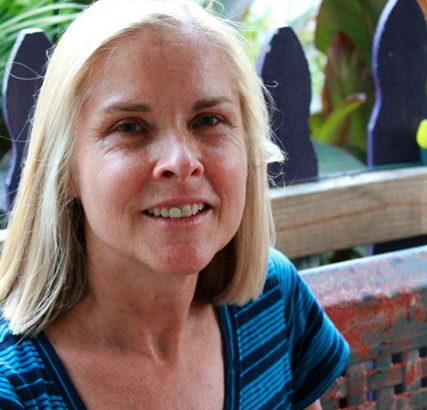

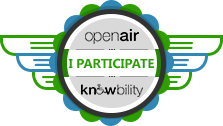
Recent Comments